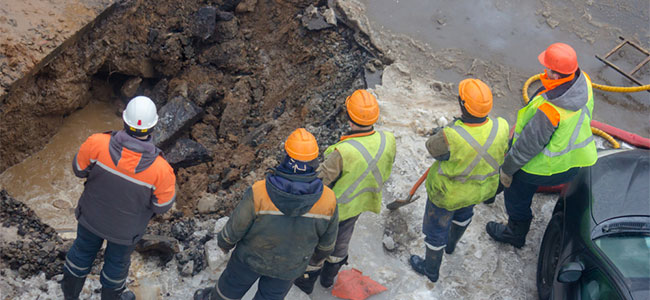
The Public Sector Side of Facility Safety
Facilities Management and Public Works play a critical role as disaster site first responders, but it’s a role that’s not fully recognized.
- By Dennis Terpin
- Sep 06, 2023
If we compare the definitions of Facility Management and Public Works, we find many similar responsibilities. Facility Management is a professional management discipline focused on the efficient and effective delivery of logistics and other support services related to real property and buildings. Public Works is the combination of physical assets, management practices, policies, and personnel necessary for cities and state governments to provide and sustain structures and services essential to the health, welfare, and safety for its employees and citizens.
The National Response Framework (NRF) is a guide to how the private sector and local, state and the nation responds to all types of disasters and emergencies. It is built on scalable, flexible, and adaptable concepts identified in the National Incident Management System to align key roles and responsibilities.
One of these roles includes the management and response activities to provide company, local and state support required under the Stafford Act. This is administration of Emergency Support Functions 3 (ESFs): Activities within the scope of this ESF 3 include conducting pre- and post-incident assessments of public works and infrastructure; executing emergency contract support for life-saving and life-sustaining services; providing technical assistance to include engineering expertise and construction management; contracting and real estate services; and providing emergency repair of damaged public infrastructure and critical facilities.
The private sector owns and/or operates a large proportion of the nation’s infrastructure and is a partner and/or lead for the rapid restoration of infrastructure-related services. Through ongoing planning and coordination, the private sector provides critical details for incident action planning and decision-making processes during an incident. Private-sector mutual aid and assistance networks facilitate the sharing of resources to support response.
Some of the responsibilities include:
- Providing emergency repairs of damaged public infrastructure and critical facilities,
- Activities include providing public information, contributing to situational awareness, establishing response teams, leveraging technological tools, training and exercising with partners,
- Provides assessment and emergency response support for water, wastewater treatment facilities,
- Provides assistance in the monitoring and stabilization of damaged structures and the demolition of structures designated as immediate hazards to public health and safety,
- Provides technical assistance in engineering expertise and construction management,
- Provides coordination, response, and technical assistance for rapid stabilization and reestablishment of critical services,
- Provides personnel to assist in damage assessment, structural inspections,
- Provide “First on the Scene” first aid services until the ambulances arrives.
This article originally appeared in the September 2023 issue of Occupational Health & Safety.